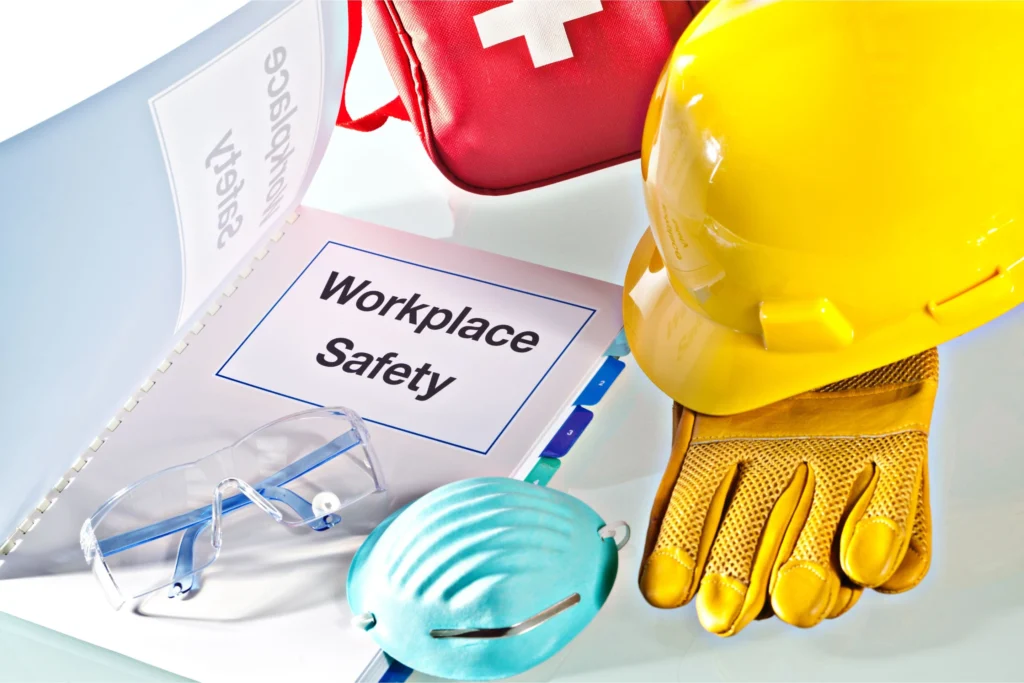INTRODUCTION FOR OFFICE SAFETY AWARENESS TRAINING
Welcome to the Office Safety Awareness Training. While offices may not seem as hazardous as industrial or construction sites, there are still many potential risks that can affect our health, safety, and well-being. That’s why today’s training is so important.
PURPOSE OF THE TRAINING
- Raise awareness about common office hazards.
- Learn how to prevent accidents like slips, trips, and falls.
- Understand ergonomics and how to set up workstations correctly.
- Discuss fire safety, emergency procedures, and first aid basics.
- Promote a culture of safety, communication, and responsibility.
- Interactive discussions and safety demonstrations.
- Real-life examples and practical tips.
- Time for questions and sharing personal experiences.
- Tools you can use to make your own workspace safer.
- Understand the Importance of Office Safety
- Recognize the impact of workplace injuries and illnesses in office environments.
- Understand the employer’s and employee’s responsibilities for maintaining a safe workspace.
- Identify Common Office Hazards
- Recognize common office risks such as slips, trips, and falls.
- Identify ergonomic hazards (e.g., improper seating, screen placement).
- Understand electrical, fire, and equipment-related hazards.
- Apply Safe Work Practices
- Demonstrate proper workstation setup and posture.
- Follow safe lifting and material handling techniques.
- Practice safe use of office equipment and tools.
- Promote Fire and Emergency Preparedness
- Understand emergency evacuation procedures and exit routes.
- Locate and properly use fire extinguishers and first aid supplies.
- Respond effectively to fire alarms, power outages, and other emergencies.
- Enhance Situational Awareness and Housekeeping
- Maintain a clean, organized, and clutter-free work environment.
- Report hazards, near misses, and unsafe conditions.
- Practice good habits for reducing distractions and improving focus.
- Support a Culture of Safety
- Encourage personal responsibility and teamwork in safety practices.
- Participate in safety meetings, drills, and workplace inspections.
- Promote ongoing communication and feedback related to safety.
- Welcome message and training objectives
- Importance of safety in the office
- Participant introductions (optional icebreaker)
- Overview of the day’s agenda
- Slips, trips, and falls
- Electrical hazards
- Poor housekeeping
- Sharp objects and office tools
- Unsafe storage practices
- Proper workstation setup (chairs, screens, keyboard/mouse)
- Posture and movement
- Preventing repetitive strain injuries (RSIs)
- Breaks and stretching exercises
- Fire prevention in office settings
- Using fire extinguishers (basic theory)
- Emergency exits, alarms, and evacuation plans
- Role of fire wardens
- Basic first aid awareness
- Location of first aid kits and contacts
- Reporting accidents, injuries, and near misses
- Why reporting matters
- Access control and visitor protocols
- Handling suspicious packages or persons
- Workplace harassment and mental well-being
- Employee responsibilities
- Safety committees and feedback systems
- Encouraging proactive safety behavior
- Continuous improvement and training
- Safety group activity
- Q & A and Wrap-up
WHY OFFICE SAFETY AWARENESS TRAINING MATTERS
Even in a low-risk environment like an office, small issues—like poor posture, blocked exits, or improper use of equipment—can lead to serious incidents. Awareness and prevention are the keys to keeping ourselves and our colleagues safe.
WHAT YOU CAN EXPECT TODAY
LEARNING OBJECTIVES
COURSE CONTENTS
Session 1: Welcome & Introduction (9.00 am – 10.00 am)
Session 2: Identifying Common Office Hazards
Morning Tea Break (10.00 am – 10.15 am)
Session 3: Ergonomics & Healthy Work Practices (10.15 am – 12.30 pm)
Session 4: Fire Safety & Emergency Procedures
Lunch Break (1 hour)
Session 5: First Aid & Incident Reporting
Session 6: Office Security & Personal Safety
Afternoon Tea Break (3.00 pm – 3.15 pm)
Session 7: Creating a Safety Culture (3.15 pm – 5.00 pm)
Session 8: Activity & Finding Hazard


